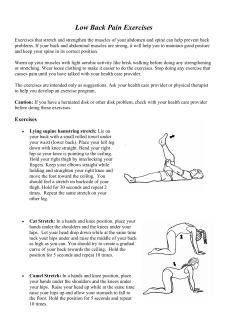
REVIEW AND STUDY GUIDE: MAT1325 (FIRST HALF)
REVIEW AND STUDY GUIDE: MAT1325 (FIRST HALF)
WINTER 2012
Abstract. MAT1325: Calculus II and an Introduction to Analysis covered the analysis needed to
justify Calculus I, and then continued on to Calculus II. The following study guide is intended to
help you review the Analysis portion of the course and self-assess your readiness for the final exam.
Sample questions are provided for this purpose; you can think of these as sample exam questions,
of varying levels of difficulty. The dividing line between Analysis and Calculus II is a little vague
(somewhere between the start of derivatives and the end of Taylor series) so to err on the safe side
extra topics are included.
1. How to study
Read your notes, and if needed, also the references listed.
Read the definitions and think about them. Can you write them down without looking? Look
at what you wrote: what did you miss and how did that change things? Now that you’ve seen how
we use the definitions, can you see why it was so important to nail those concepts down precisely?
Can you provide examples of things which do, and which do not, satisfy the definition?
Read the theorems and think about them. What do they say and what do they not say? What
hypotheses do you have to check before you know the conclusion holds? Try to sketch out the
proof (even for tough theorems); then read the proof, and see how things fit together to make the
proof. If the proof is an exercise, do it! For most results, it’s the proof that is the most interesting,
because it’s what shows you how to use the tools of the course.
For major theorems: try writing down the statement of the theorem. Then compare. What did
you miss and why did you miss it?
Try the suggested exercises below: mentally, if they seem easy, or on paper if they don’t. If you
get stuck on an exercise, or after you have completed all the exercises:
Read the solutions to the HW problems if you have not already done so, and compare with your
own solution. Reflect on the differences between the solution you handed in then, the solution you
came up with now, and the posted solutions.
Read the solutions to the DGD exercises (if they exist) and/or read over your DGD notes. If
something doesn’t make sense, think it through and nail down your problem.
Identify the problems you are having when solving the problems, if any. If you lost marks on
homework questions, identify where and why. Your goal is to learn from your mistakes, not to
repeat them on the final exam.
Don’t forget to practice Calculus II! That material will be approximately 2/3 of the weight of
the final exam. (Analysis will be about 1/3, so blowing it away is not an option is you wish to pass
the course.)
2. Inequalities and absolute values
References: course notes Sections 1.3.1 and 1.3.2; also Stewart Appendix A.
Key theorem: triangle inequality
Exercises:
(1) DGD2 #1–11
Date: March 25, 2012.
1
2
WINTER 2012
(2)
(3)
(4)
(5)
(6)
HW1 #1–3
Prove or disprove:
Prove or disprove:
Prove or disprove:
Prove or disprove:
a > b iff a2 > b2 .
a > b iff |a| > |b|.
if a < b then for any x > 0, |x + a| < |x + b|.
if |y| > 0 then for any x 6= 0, |x| < |x + y|.
3. Suprema and infima of sets of real numbers
References: course notes 1.3.3 and Trench 1.1
Key definitions and theorems: upper bound, lower bound, least upper bound=suprmum, greatest
lower bound=infimum, Theorem giving definition of supremum in terms of , intervals (open, closed,
half-open)
Key axioms: Archimedean property, Completeness axiom of real numbers
Exercises:
(1)
(2)
(3)
(4)
(5)
Course notes 1.3.4 # 13, 14, 15, 17, 18
HW1 #4
HW2 #1
DGD2 #12–15
Give examples of sets of real numbers with the following properties:
(a) are not bounded
(b) are bounded above but not below
(c) are bounded but contain neither their infimum nor their supremum
(d) are bounded and contain both their infimum and their supremum
(e) are bounded and sup(S) = inf (S)
(f) bounded and sup(S) < inf(S) (Hint: really really special set, which we usually exclude)
(6) Prove that if a sequence is monotone increasing and bounded above then it converges to
the supremum of its values.
(7) Suppose f is a continuous function. Prove that if f (c) < Z < f (d) and S = {x ∈ [c, d] |
f (x) < Z} then S is nonempty and bounded above. Prove that if u = sup(S) we have
f (u) = z.
4. Induction
Reference: Course notes section 1.4, Trench 1.2
Exercises:
(1)
(2)
(3)
(4)
DGD3 # 1
DGD4 # 9
P
Prove by induction the formula for ni=0 ri , for r ∈ R with r 6= 1 and r 6= 0.
P
.
Prove by induction that ni=0 i2 = n(n+1)(2n+1)
6
REVIEW AND STUDY GUIDE: MAT1325 (FIRST HALF)
3
P
(5) Here is a proof that ni=0 i = 12 n(n + 1): We have
!
n
n
n
X
X
X
i =
i+
i
2
i=0
=
=
i=0
n
X
i+
i=0
k=0
n
X
n
X
i+
i=0
=
=
i=0
n
X
n
X
i=0
n
X
(n − k)
setting k = n − i
(n − i)
renaming k = i
i=0
(i + (n − i))
n
i=0
= n(n + 1)
since there are n + 1 terms, each equal to n
Whence the result. Question: is this a proof by induction?
(6) What is incorrect in the following “proof” by induction? We wish to prove 2n > n. If this
is true for n, then we have
2n+1 = 2(2n ) > 2(n) ≥ n + 1
(where the > is the inductive hypothesis and ≥ is because n ≥ 1).
(7) Let {an } be the sequence defined by a0 = 41 and for all n ≥ 0, an+1 = 2an (1 − an ). Prove
by induction that
2 n !
1
1
an =
1−
2
2
for all n ≥ 0. Is this sequence convergent? If so find its limit.
(8) Let {an } be the sequence defined by a0 = c and for all n ≥ 0,
an+1 = 2an − a2n .
n
Prove by induction that an = 1 − (1 − c)2 for all n ≥ 0. Is this sequence convergent? If so
find its limit.
5. Sequences
References: course notes 2.1 and 2.2; Trench; Stewart 8.1
Key definitions: convergence of a sequence, limit of a sequence, divergence to ±∞, monotone
sequence, subsequence
Key theorems: unicity of the limit, algebra with limits of convergent sequences, convergent sequences are bounded, bounded monotone sequences are convergent, Bolzano-Weierstrass (every
bounded sequence contains a convergent subsequence), every sequence contains a monotone subsequence
Exercises:
(1) DGD4 #1–7
(2) HW2 #2,3
(3) Course notes Section 2.4 #1–12
(4) Course notes Section 4.4 #1,2
(5) Stewart section 8.1 #1–34, 45, 47, 49, 51, 53, 55.
4
WINTER 2012
(6) Construct a sequence of rational numbers converging to a given number c. Use the socalled standard method (of choosing the nth term of your sequence to lie within 1/n of the
intended limit).
6. Series
References: Course notes Section 2.3, Stewart 8.2 and comparison test in 8.3 and ratio test in
8.4.
Key definitions: series, terms of a series, partial sums, geometric series, telescoping sum, harmonic series
Key theorems: test for divergence (Prop 2.38 in notes), comparison test, ratio test
Exercises:
(1) HW2 #4,5
(2) DGD4 #10
(3) DGD5 #1–5
(4) Stewart 8.2 #1, 9–31, 41
(5) Stewart 8.3 #9, 11, 13, 19, 23, 25
7. Continuous functions
References: Course notes Chapter 3, Stewart Appendix D, Trench Chapter 2
Key definitions: Continuous function (original definition in terms of sequences, and also the ε
and δ definition), open set, union and intersection of sets,
Key theorems: algebra of continuous functions, the inverse image of an open set by a continuous
map is open, Intermediate Value Theorem, Extreme Value Theorem
Exercises:
(1) DGD5 #6,7,9,10, 11bc
(2) DGD6 #2,3,5 7, 8, 10,
(3) HW3
(4) Courses notes 3.7.1 #3, 4
(5) Stewart, Appendix D #1–7, 9, 13, 15, 19
(6) Prove using the definition (or the ε & δ definition) of continuity that the following functions
2
are continuous (either
√ at all x in their domain, or else at x = 3): f (x) = x , g(x) = 2x + 1,
1
h(x) = x , j(x) = x. If you use the sequences definition, show how you are reducing the
problem to one about sequences. Then, prove the corresponding result about sequences, or
else explain how it follows from known results about sequences.
(7) Prove that for a continuous function f , we have
lim f (g(x)) = f lim g(x)
x→a
x→a
assuming the limit on the right exists and is an element of the domain of f . Your proof
should not assume that g is continuous at a.
8. Derivatives
References: MAT1320, Course notes Chapter 4, Trench 2.3
Key definitions, theorems: the derivative of a one-variable function, differentiable functions are
continuous on their domain, at a relative extremum f 0 (c) = 0, Rolle’s Theorem, the Mean Value
Theorem.
Exercises:
(1) Course notes Section 4.4 #4,5
(2) HW4 #1, 2
REVIEW AND STUDY GUIDE: MAT1325 (FIRST HALF)
5
(3) DGD8 #1,2
9. Taylor’s theorem
References: Course notes Section 5.1, Stewart parts of 8.6, 8.7 (MacLaurin series=Taylor series
centered at a = 0; power series = name for series that look like Taylor series)
Key definitions, theorems: Taylor polynomial of degree n of f centered at a, Taylor’s theorem,
Taylor remainder, Taylor series
Results stated as examples: differentiation and integration of Taylor series, change of variable,
products
Exercises:
(1) Course notes Section 5.2 # 1, 2, 4–7 (which include a list of exercises from Stewart)
(2) DGD8 #3,5,6
(3) HW4 #4,5
10. And the rest...
We then continued on to material that you can find in Stewart; the lists of exercises tend to be
more computational from this point onwards.
© Copyright 2025










![HOME TREATMENT OF BPPV: BRANDT-DAROFF EXERCISES [ ]](http://cdn1.abcdocz.com/store/data/000138030_1-95f56718c005f701249a339b29c2db3c-250x500.png)










